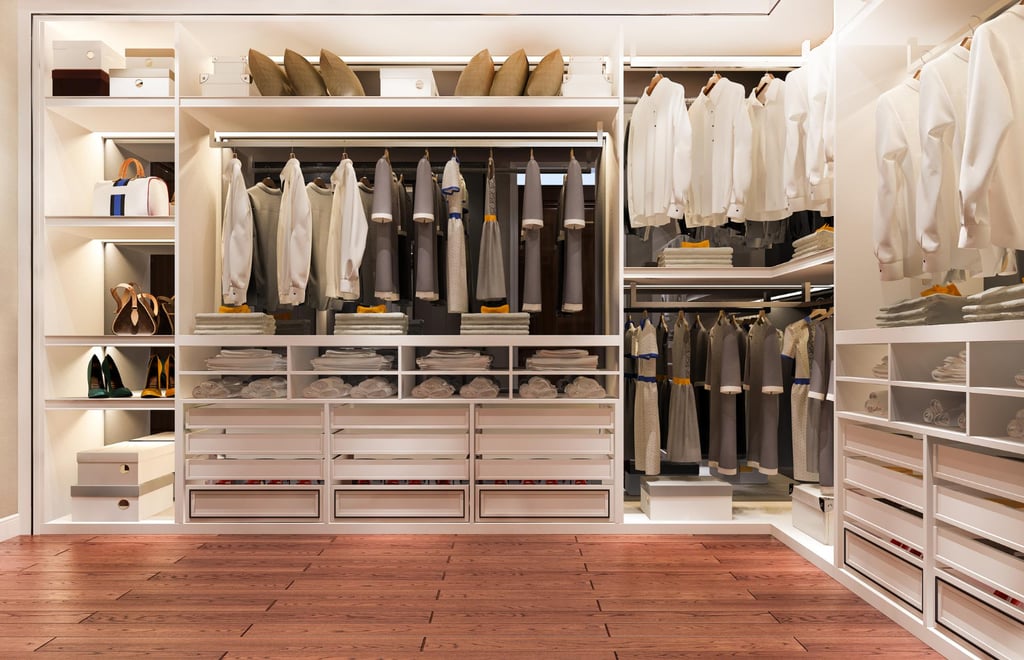Mastering the Art of Space: Intelligent Planning & Storage for the Modern Indian Home
DESIGN
In the vibrant tapestry of Indian homes, space is a precious commodity, often characterized by bustling family life, a rich cultural heritage, and a practical need for efficient living. From compact urban apartments to more expansive traditional houses, the challenge of optimizing every square foot while accommodating a myriad of belongings is a universal design concern. Gone are the days when storage was an afterthought; today, intelligent space planning and seamless storage management are not just desirable – they are fundamental pillars of modern Indian home design, ensuring both functionality and aesthetic appeal.
The unique lifestyle of Indian families demands a nuanced approach to design. Our homes often host multi-generational living, frequent entertaining, elaborate religious ceremonies, and a significant collection of clothing, utensils, and inherited treasures. This necessitates solutions that are not only aesthetically pleasing but also deeply practical and culturally relevant.
The Blueprint of Efficiency: Smart Space Planning
Effective space planning is about more than just fitting everything in; it's about creating fluidity, maximizing utility, and enhancing the psychological comfort of a home.
Multi-functional Spaces are King:
In Indian homes, rooms rarely serve just one purpose. A living room transforms into a prayer area, a dining table doubles as a study desk, and a guest bedroom becomes a storage hub. Design can facilitate this transition. Consider foldable furniture like wall-mounted desks or convertible sofa-beds. Use movable partitions or sliding doors to create flexible zones that can be opened up for gatherings or closed off for privacy. Even large rugs can subtly define different functional areas within an open-plan layout.
Embrace Verticality:
The adage "the only way is up" holds true for Indian homes. Look beyond the floor area and utilize walls to their full potential. Floor-to-ceiling shelving, wall-mounted display units, and vertical gardens not only save floor space but also add visual interest. Built-in niches and recessed shelves can integrate seamlessly into the design, offering both storage and display opportunities without encroaching on circulation areas.
Open-Plan Concepts with Indian Sensibilities:
While open-plan layouts are globally popular for creating a sense of spaciousness, they can be adapted for Indian needs. Instead of completely open spaces, consider semi-open concepts with archways, jali screens, or strategically placed furniture (like a low console table) that provide subtle division without full walls. This allows for light and air circulation while still maintaining a sense of traditional privacy in certain zones, particularly important for kitchen or puja areas.
Strategic Circulation Paths:
Ensure pathways within the home are clear and unobstructed. Furniture placement should guide movement rather than hinder it. Good circulation makes a home feel larger and more inviting, improving energy flow (Vaastu Shastra principles often align with this, advocating for clear pathways).




The Art of Disappearing Acts: Intelligent Storage Management
Once space is optimized, the next challenge is integrating storage so seamlessly that it almost "disappears." This is crucial for maintaining an uncluttered, serene environment in Indian households, which tend to accumulate over time.
Built-in & Custom Cabinetry:
This is the gold standard for Indian homes. From wardrobes with internal organizers designed for sarees and traditional wear, to kitchen cabinets tailored for specific utensils like pressure cookers and spice dabbas, custom solutions ensure every item has a designated, accessible spot. Think about integrating storage under windows (window seats with lift-up lids), around doorways, or even within bed frames.
Beyond the Wardrobe: Specialized Storage:
Indian homes have unique storage needs.
Kitchens: Dedicated pantry units for bulk groceries, pull-out spice racks, and specialized drawers for cutlery and traditional serve ware.
Puja Units: Custom-designed prayer areas that incorporate discreet storage for religious books, idols, and ceremonial items, maintaining sanctity while keeping clutter at bay.
Linen & Seasonal Storage: Deep drawers or overhead cabinets for bedding, festive decor, and off-season clothing are essential, often accessed via pull-down ladders in higher sections.
Shoe Cabinets: A staple near the entrance of most Indian homes, smart shoe cabinets with ventilation are key for organization and hygiene.
Leveraging Dead Space:
Every nook and cranny have potential.
Under-stair storage: Perfect for utility items or even a compact study nook.
Alcoves and Niches: Turn these into display shelves or integrated storage.
Behind-the-door storage: Over-the-door organizers can be surprisingly effective for smaller items.
Modular and Movable Storage:
For adaptability, consider modular shelving units that can be reconfigured. Storage ottomans and benches provide seating and hidden storage. These pieces offer flexibility as needs change over time.
The Role of Organization:
Even the smartest storage units need good internal organization. Dividers, baskets, drawer organizers, and vacuum-seal bags can maximize capacity and make items easier to find. Regularly decluttering is perhaps the most powerful storage management strategy of all.
By thoughtfully integrating space planning and storage management, Indian homes can transcend their physical dimensions, becoming highly functional, aesthetically pleasing, and deeply personal sanctuaries that truly resonate with the rhythm of contemporary Indian life. It's about designing a home that not only accommodates life but enhances it, making every square foot count.
FOQ
Q1. What are some effective ways to create more storage in a small Indian apartment?
A1. Focus on vertical storage (floor-to-ceiling units, wall shelves), multi-functional furniture (storage beds, ottoman benches), utilizing dead spaces (under-stair, corners), and custom built-ins like recessed niches or integrated wardrobes.
Q2. How can I design my kitchen for Indian cooking needs while maximizing space?
A2. Incorporate deep drawers for pots and pans, pull-out spice racks, dedicated pantry units for bulk items, and smart corner solutions. Consider custom cabinetry that accommodates specific Indian appliances like large blenders or wet grinders and ensure ample counter space.
Q3. Is it possible to have an open-plan layout in an Indian home without compromising privacy, especially for guests or prayer areas?
A3. Yes, use semi-open designs with elements like sliding jali screens, ornate archways, or partial walls. Strategically placed furniture, large area rugs, or even decorative shelving units can also subtly delineate zones without fully enclosing them.
Q4. What's the best way to store traditional Indian clothing like sarees and lehengas to prevent damage and save space?
A4. Use specialized wardrobe solutions with long hanging rods, dedicated saree hangers that prevent creasing, and ventilated drawers for heavy garments. Vacuum storage bags can also be effective for seasonal or occasional wear to save space.
Q5. How do I balance the need for visible traditional decor or heirlooms with maintaining a clutter-free look?
A5. Integrate display into your storage solutions. Use glass-front cabinets for prized items, dedicated display shelves within wall units, or create a single, prominent "focus wall" for showcasing a curated collection rather than scattering items throughout the home.



